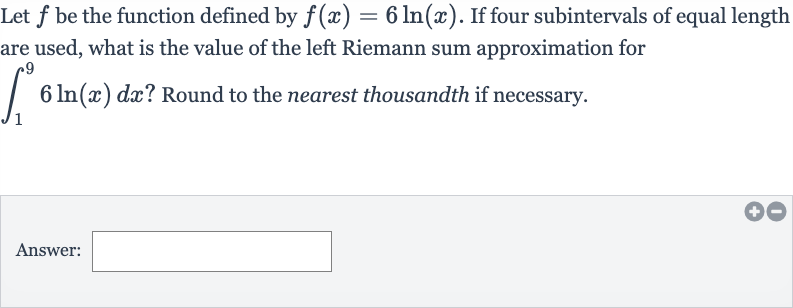Full solution
Q. Let be the function defined by . If four subintervals of equal length are used, what is the value of the left Riemann sum approximation for ? Round to the nearest thousandth if necessary.Answer:
- Divide into Subintervals: To approximate the integral using the left Riemann sum, we first need to divide the interval into four subintervals of equal length. The length of each subinterval is calculated by subtracting the lower bound of the integral from the upper bound and then dividing by the number of subintervals.Length of each subinterval = .
- Calculate Endpoints: The endpoints of the subintervals are then , , , , and . Since we are using the left Riemann sum, we will use the left endpoints of each subinterval to calculate the sum. These left endpoints are , , , and .
- Evaluate Function Values: Now we evaluate the function at each of the left endpoints and multiply each function value by the length of the subinterval (which is ). This gives us the areas of the rectangles that approximate the integral.
- Sum Areas of Rectangles: We calculate the function values:
- Calculate Left Riemann Sum: Now we sum up the areas of the rectangles to get the left Riemann sum approximation:Left Riemann sum = + + + Left Riemann sum =
- Perform Multiplication and Addition: Perform the multiplication and addition to get the final approximation:Left Riemann sum = Left Riemann sum =
- Round to Nearest Thousandth: Round the result to the nearest thousandth as requested: Left Riemann sum

